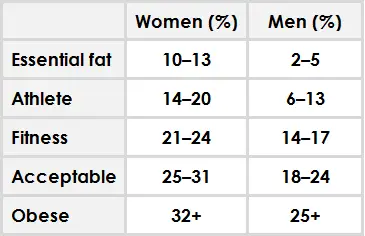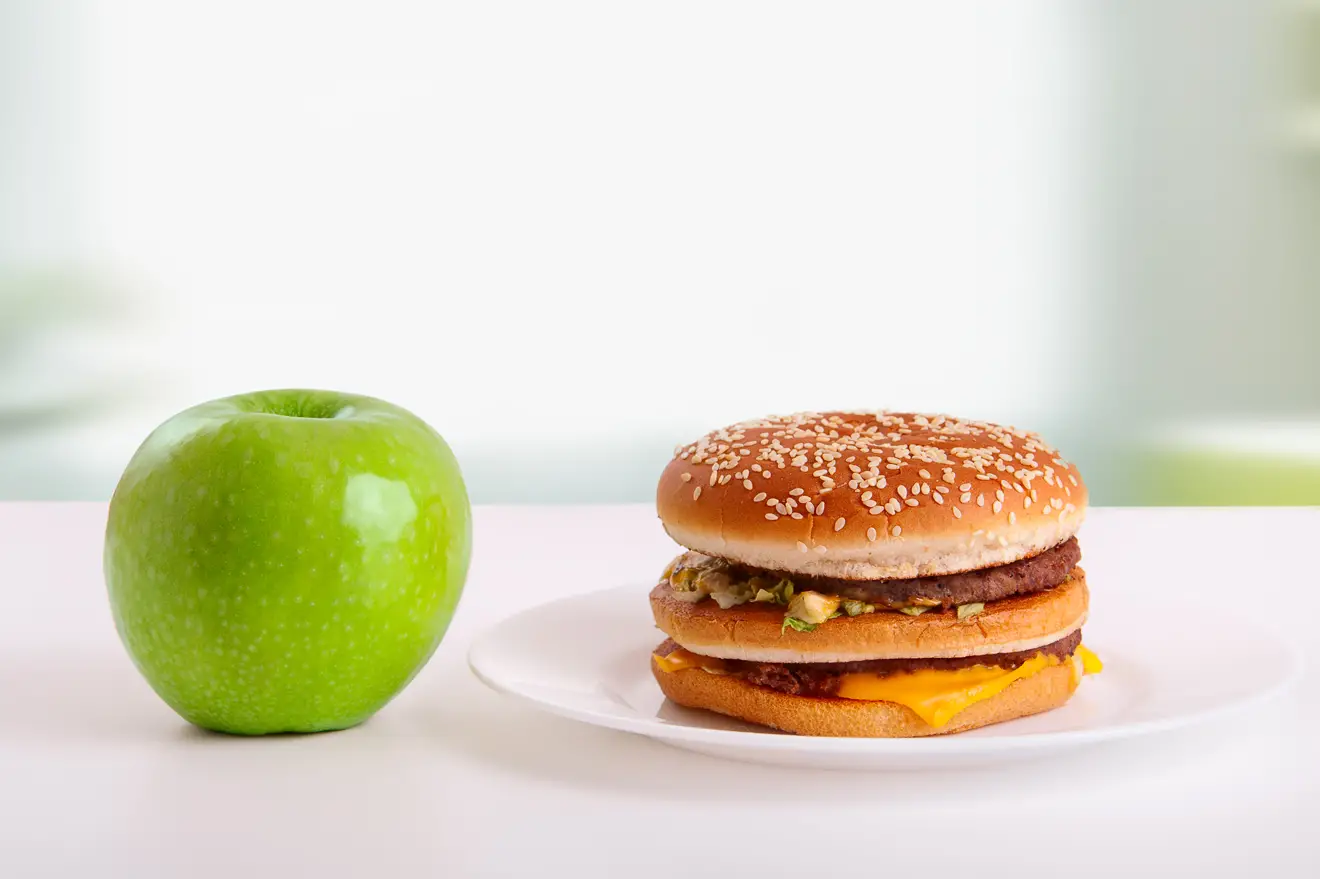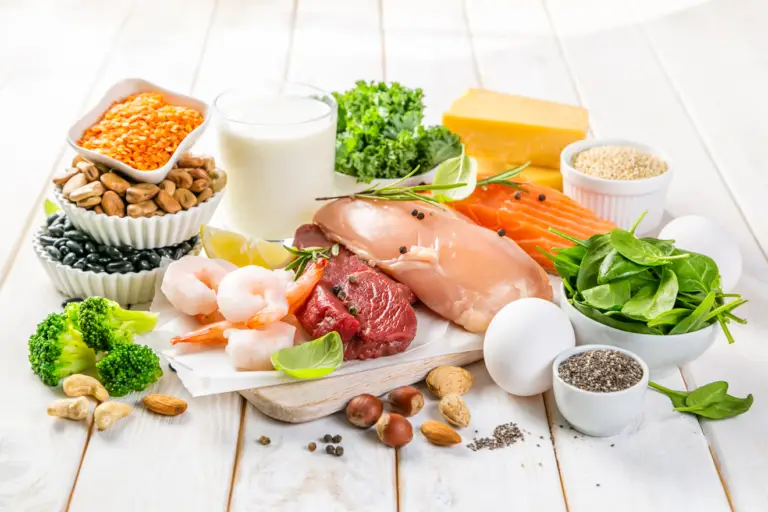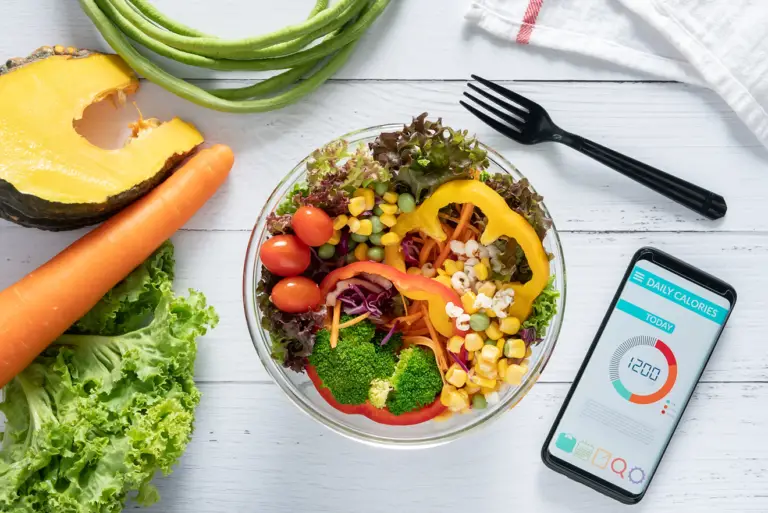Bulking and cutting
What are bulking and cutting?
Bulking and cutting are nutritional cycles. ‘Bulking’ means to consume more kilocalories each day than your body needs — that is, to put your body into a state of caloric surplus. This state optimizes muscular growth. Unfortunately, it also leads to gaining some body fat.
‘Cutting’ means to consume fewer kilocalories each day than your body needs — that is, to put your body into a state of caloric deficit. The aim of cutting is to lose body fat without losing much muscle.
The origin of bulking and cutting was in bodybuilding. Bulking helps bodybuilders to gain muscle before a competition, and cutting helps them to get rid of the unwanted body fat and be left with a well-defined physique or figure before the competition.
There is also ‘maintaining’, which means to consume the same number of kilocalories each day that your body needs. The purpose of maintaining is to retain your current physique or figure.
Should you bulk, cut, or maintain?
Whether you should bulk, cut, or maintain depends on your goal, training experience, and body-fat percentage. The American Council on Exercise (ACE) has provided the following body-fat percentage ranges (Table 1).

Table 1. ACE body-fat percentage ranges. ‘Essential fat’ is the minimum amount of fat necessary for basic physical and physiological health.
Note: I explained how to work out your body-fat percentage in the Weight Training Guide, in How to track your progress.
Assuming that you have little or no proper training experience and your goal is to maximize growth in strength and muscle (or curves if you’re a lady), I’d generally recommend the following bulking and cutting guidelines.
- If your initial body-fat percentage falls within the Athlete range (that is, 6% to 13% for men and 14% to 20% for women), you can start with a bulk. If at any point your body-fat percentage exceeds the Fitness range, you should cut
- If your initial body-fat percentage falls within the Fitness or Acceptable ranges, you can start by maintaining. Together with a healthy diet and an effective training program, you should lose fat and build muscle/curves at the same time. Your goal will be to bring your body-fat percentage down to the Athlete range, after which you can bulk. If you fall short of achieving the range, get some assistance from a cut
- If your initial body-fat percentage is in the Obese range, you should start with a cut. Your goal will be to bring your body-fat percentage down to the Athlete range, after which you can bulk. By then, you should have already built a significant amount of muscle/curves
- When you’re happy with your body, maintain. Never let your body-fat percentage drop into the Essential fat range
Aren’t bulking and cutting unhealthy?
Repeatedly and rapidly gaining and losing lots of weight is very unhealthy and therefore not recommended. It plays havoc on your hormones and can have all kinds of other detrimental effects. It is especially unhealthy for women and teenagers.
However, if done correctly, bulking and cutting are not unhealthy. The correct way to bulk and cut, as almost ensured if you follow the steps below, is to take them very slowly and carefully, putting your body into a mild caloric surplus when bulking and into a mild caloric deficit when cutting.
How to bulk and cut: the old way
The old way of bulking and cutting was difficult. It involved:
- Manually calculating your total daily energy expenditure (TDEE), which is the number of kilocalories your body needs each day to maintain the same weight
- Adding, say, 250 kilocalories if bulking
- Subtracting, say, 250 kilocalories if cutting
- Deciding on how many of those kilocalories will come from protein, how many will come from fat, and how many will come from carbohydrate (known as your macronutrient ratio)
- Counting every kilocalorie that you eat and drink with pen and paper, and making sure to meet your daily caloric and macronutrient requirements!
How to bulk and cut: the new way
The new way of bulking and cutting is much easier: Just use an app. I use MyFitnessPal, but you can use other apps. The guidelines I provide below are specific to MyFitnessPal as of 2021, but other apps should have similar functionalities. Keep in mind that MyFitnessPal’s interface may have changed by the time you use it, but the relevant functionalities should still be available.
How to use MyFitnessPal
Using MyFitnessPal to bulk, cut, or maintain is simple. All you have to do is select the relevant app options (see below) depending on whether you want to bulk, cut, or maintain. Then, just:
- Use the app to add foods and exercises, and ensure that you meet your daily caloric and macronutrient goals. I explain how to add foods and exercises in How to track your kilocalories and diet
- Every two weeks, enter your new current weight into MyFitnessPal so that it keeps track of your progress and knows how many kilocalories to prescribe
Note: Whenever you edit your current weight, MyFitnessPal resets your macronutrient ratio settings, so you will have to change them back.
General important notes
Whichever app you use, before you start bulking, cutting, or maintaining, take your body-part measurements and body-fat percentage as described in the Weight Training Guide, in How to track your progress.
Whether bulking, cutting, or maintaining, get the vast majority of your kilocalories from healthy, nutrient-dense foods. MyFitnessPal will tell you what nutrients you’re lacking.
If you screw up your diet on occasions — and you surely will! — don’t lose enthusiasm and give up; just carry on from where you left off.
You do not need to change your weight training program when bulking, cutting, or maintaining. If necessary, just perform a little more cardio when cutting to assist with fat loss. See the Cardio Training Guide for guidance.
There is no perfect way of bulking and cutting that works for everybody. The guidelines below will help you to get started on the right track. However, it’s up to you to track your progress and make the necessary adjustments in accordance with your results and preferences.
MyFitnessPal settings for bulking
- Go to the Goals section of MyFitnessPal
- Enter your Goal Weight. This isn’t important. It doesn’t affect the app’s calculations. Just be realistic
- For Weekly Goal, select ‘Gain 0.5 lb per week’
- For Nutrient Goals, set your protein intake to a percentage that ensures that you get 0.59 to 0.82 grams per pound of body weight per day (1.3 to 1.8 grams per kilogram of body weight per day). Set your fat intake to between 20% and 35% based on your own preferences. Set your carbohydrate intake to account for the remaining percentage
Guidelines for bulking
- Bulk only if your body-fat percentage falls within the Athlete range of Table 1
- If you don’t start gaining weight, change your Weekly Goal in MyFitnessPal to ‘Gain 1 lb per week’. This should kick-start your weight gain
- Bulk for at least six months, preferably longer. You want to allow enough time to build a decent amount of muscle. Remember, you will probably lose a bit of muscle when you cut, and you do not want to lose the small amount that you built and be left exactly where you started!
- If you gain too much weight in the first couple of weeks, don’t worry. This is normal if you are new to weight training. It usually occurs because your muscles fill with water and glycogen, which should stop after the first few weeks, leaving your weight to increase at or close to the desired rate. Make sure that the excessive gains aren’t all fat by checking your body-fat percentage
- If you keep gaining too much weight, cut your daily caloric intake in increments of 150 every week until you start gaining the desired amount of weight. You can change your calorie goal in the Goals section of the app
- Stop bulking if your body-fat percentage exceeds the Fitness range in Table 1, and start cutting
MyFitnessPal settings for cutting
- Go to the Goals section of MyFitnessPal
- Enter your Goal Weight. As mentioned above, this isn’t important. Just be realistic
- For Weekly Goal, select ‘Lose 0.5 lb per week’
- For Nutrient Goals, set your protein intake to a percentage that ensures that you get 0.82 to 0.91 grams per pound of body weight per day (1.8 to 2.0 grams per kilogram of body weight per day). If obese, make it per lean body mass instead of per body weight. Set your fat intake to between 20% and 35% based on your own preferences. Set your carbohydrate intake to account for the remaining percentage
Guidelines for cutting
- If you don’t start losing weight, change your weekly goal in MyFitnessPal to ‘Lose 1 lb per week’. This should kick-start your weight loss
- The cut should be slow and careful to avoid as much muscle loss as possible
- If you’re new to weight training and have a high body-fat percentage, you will probably lose more weight than expected at the start of the cut, which is fine. You can safely lose up to three pounds per week in the first few weeks, after which you should try to lose no more than one pound per week. The reason is that you don’t want to end up with ugly, loose skin. What’s more, the less fat you have on your body, the more your body will try to burn muscle for energy. To reduce the amount of weight that you’re losing, increase your daily caloric intake in increments of 150 every week until you start losing the desired amount. You can change your caloric goal in the Goals section of the app
- If you stick to your diet, at the end of the week, you can treat yourself to a cheat meal. Yay!
MyFitnessPal settings for maintaining
- Go to the Goals section of MyFitnessPal
- Enter your Goal Weight, which is the same as your current weight
- For Weekly Goal, select ‘Maintain weight’
- For Nutrient Goals, set your protein intake to a percentage that ensures that you get 0.59 to 0.82 grams per pound of body weight per day (1.3 to 1.8 grams per kilogram of body weight per day). Set your fat intake to between 20% and 35% based on your own preferences. Set your carbohydrate intake to account for the remaining percentage
Guidelines for maintaining
- Maintaining is simply a matter of meeting your daily caloric and macronutrient requirements, tracking your progress, and sticking to your training program
- As with cutting, you can treat yourself to a cheat meal once a week
- Note that maintaining with a higher body-fat percentage will give you more potential to keep growing your muscles/curves because you will be able to eat more. The more food you can eat, the more potential your body will have to make gains
Deciding on how much fat vs carbohydrate
In the above recommendations for protein, fat, and carbohydrate percentages, I suggested that, after you select the necessary percentage of protein, you choose a percentage of fat between 20% and 35% based on your own preferences, and that you set your carbohydrate intake to account for the remaining percentage. The following questions will help you to decide how much fat and carbohydrate to select.
- How regularly will you be eating? Fat keeps you satiated for longer than carbohydrate does, so if you will be eating only two to three times per day, choose more fat
- Do you feel exhausted after workouts? If so, make room for more carbohydrate, which is your primary source of energy
- When bulking, do you find it difficult to eat lots of food every day? If so, choose more fat because fat is more calorie-dense than carbohydrate is, so you will not have to eat as much food
- How much do you enjoy fat versus carbohydrate? The less you eat of one, the more you will be able to consume of the other
When making your decision, keep in mind the importance of getting enough fat-soluble vitamins (A, D, E, and K) and essential fatty acids, and don’t forget the crucial role fat plays in the production of testosterone and insulin-like growth factor 1 (IGF-1), which are essential for muscular growth.







